Geoffrey Bawa
A walk through eight iconic designs of the late, Geoffrey Bawa, one of Asia’s most influential architects
Sri Lanka has always been a favourite destination for travellers, despite its troubles. People love its sun-kissed beaches, green, verdant, lush mountains, and mouth-watering local cuisine.
Sri Lanka also is the proud owner of many unique architectural marvels, including those by one of Asia’s most influential architects, the late Geoffrey Bawa. From the age of 38, when Bawa abandoned his profession as a lawyer at the age of 38 to become a qualified architect and until his death in 2003, he designed 30 hotels, schools, and private residences across the country.
His work and him, both are celebrated even today. Bawa was also the pioneer of tropical modernism, a global design movement focusing on increased natural ventilation, open spaces, and local resources, blending modernist architecture with nature and locality to adapt to hot, humid tropical conditions. His work encompassed modernist designs and integrated them into traditional Sri Lankan components. He worked together with Sri Lankan artists and craftsmen to highlight the authenticity of the island. We bring to you 8 of his most iconic designs to get a glimpse of his work and ideas…
1. The Sri Lankan Parliament Complex is an asymmetric group of colonnaded pavilions with striking copper roofs ‘floating’ on a man-made lake. The site was originally a marsh and was dredged to form a small island to support the structures and a wide shore with dense tree cover. The approach is along a causeway and across a forecourt. Traditional wood and stone columns, reminiscent of ancient palaces and temples, support the stately copper roofs. The Parliamentary complex is Bawa’s most symbolic work, conceptualized as movements through spaces, resulting in the asymmetrical configuration. It is also perhaps the only project where he has allowed form to override the priority of landscape.
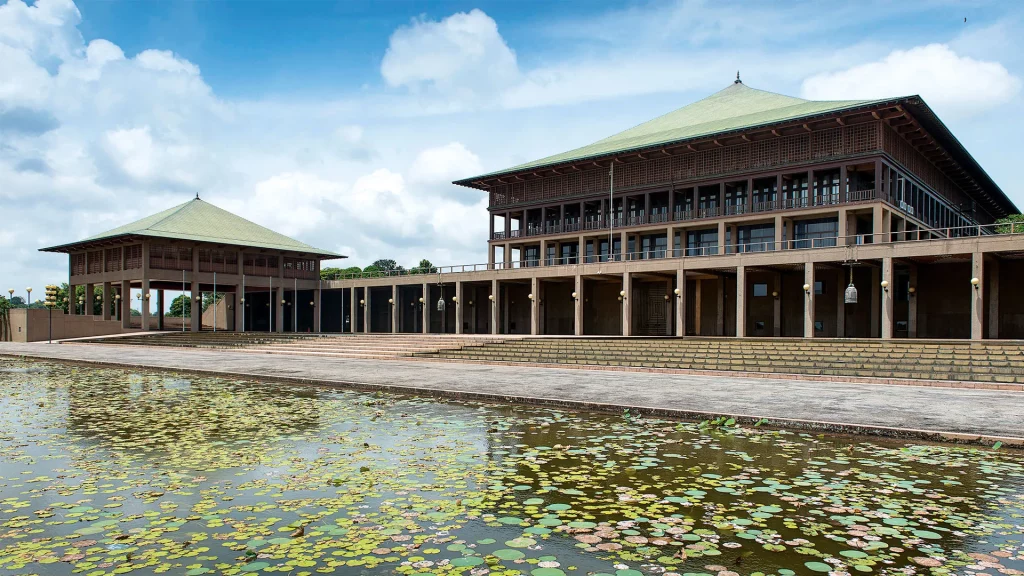
2. Number 11 in Sri Lanka’s commercial capital of Colombo was once the residence of Bawa. the three-story villa is open for pre-arranged visits, but only the two-bedroom suite is allowed for overnight stays. Inside, beautiful courtyards and long verandas are adorned with houseplants. You can see Balinese wall hangings and skylit gardens guarded by pillars resembling South Indian Hindu architecture. Bawa’s office room, with light-infused walls, sits on the ground floor. The room’s interior is designed with local arts and crafts, and the furniture was designed by the architect himself. There’s also a rooftop with tropical houseplants open for visitors.
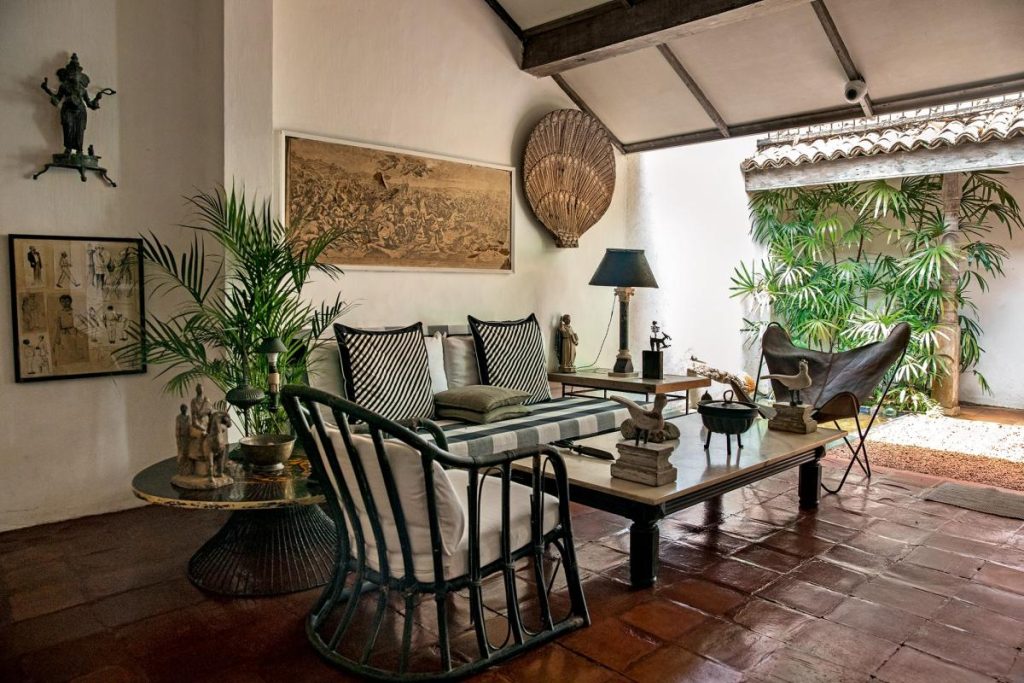
3. The Gallery Cafe is a beautifully designed colonial bungalow and is now a fine dining restaurant in Colombo. The restaurant space is housed in one of Bawa’s former offices. In 1988, designer and hotelier Udayashanth Fernando transformed Bawa’s workspace into a chic, cosy restaurant that has preserved the vernacular design and timeless character of the building. We can see an intimate courtyard as we walk along the corridor and open dining spaces with Bawa’s aesthetics. The Gallery Cafe features an extensive menu, inspired by both local and international flavours. Diners frequent the space for the Sri Lankan black pork curry and desserts infused with “kithul”, and palm syrup.
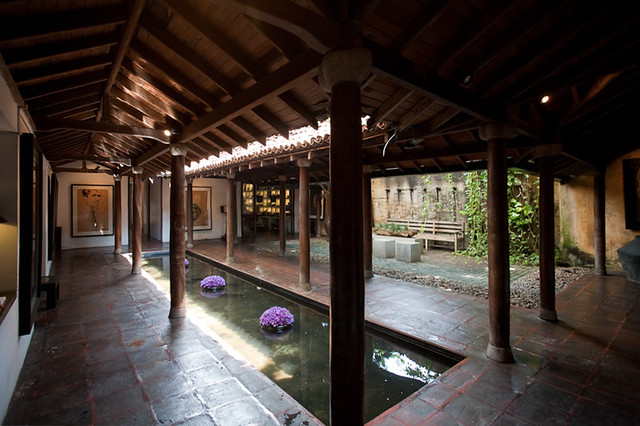
4. Heritance Kandalama is a dramatic architectural marvel, Heritance Kandalama sits in Dambulla, 21 kilometres south of Sigiriya, an ancient rock fortress and UNESCO World Heritage Site. In keeping with the aesthetics of the remote location, Bawa designed the hotel with no earth-moving machines and made sure the rock formations at the original site weren’t removed. The hotel features long, exterior walkways and wooden lattices with climbing vegetation. The multi-story resort is adjacent to a steep rocky outcrop and has three main sections. The centre of the building houses common spaces such as the main lobby, public pools, and restaurants while the eastern wing houses guest rooms, with outlying views over the sweeping Kandalama Reservoir. Nestled in thick, green foliage, the southwest wing is allocated for other guest rooms.
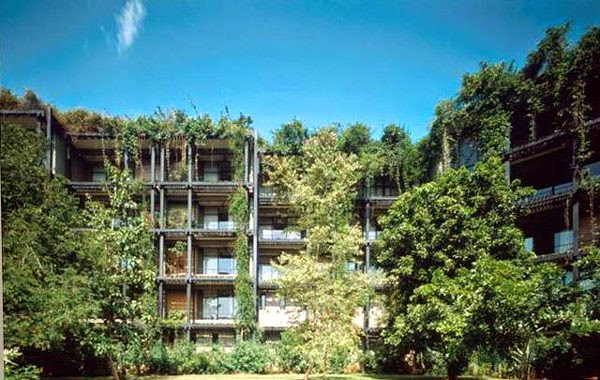
5. Lunuganga Estate is often considered Bawa’s most famous work. It is located in Bentota, a quaint beach town 80 kilometres south of Colombo. The 15-acre expansive, lakeside garden location was a former rubber estate before it became the country home of Geoffrey Bawa. It was here Bawa spent four decades carefully crafting his tasteful, exquisite designs. Inside the sprawling estate is an Italianate Garden with stone statues, a halcyon cottage, six independent visitor suites, and lotus ponds. Around the garden are elaborate, intimate pavilions with views of Dedduwa Lake and the subtropical jungle. On the gatehouse verandah is a mural by local artist Laki Senanayake, which was painted over three decades.
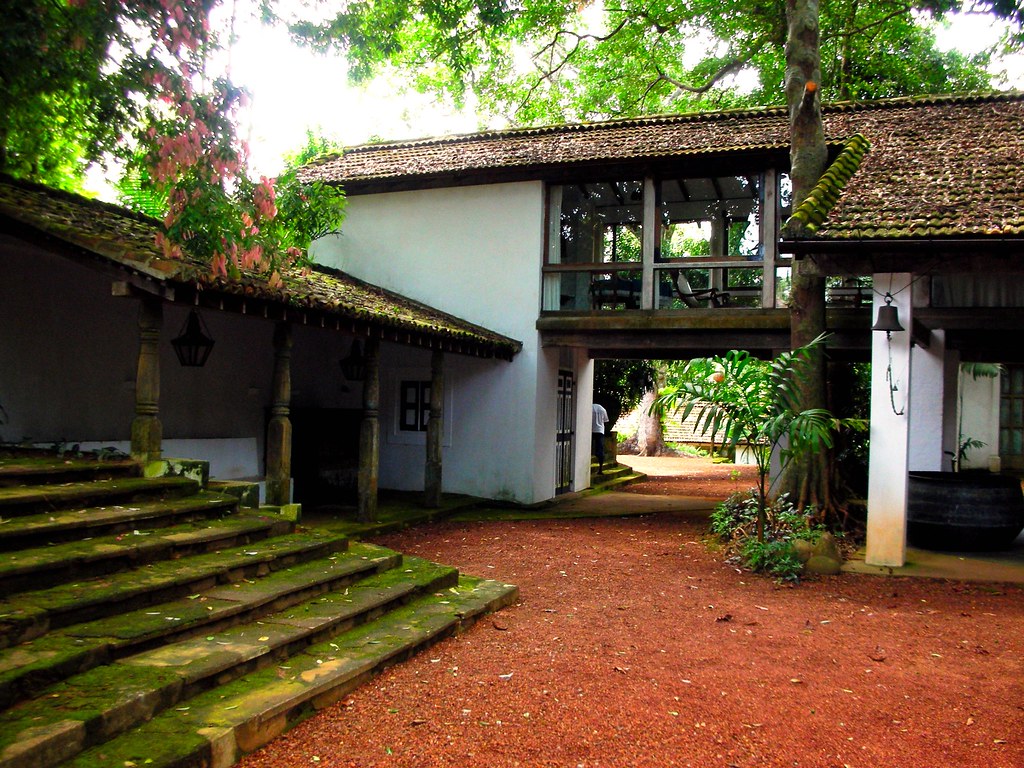
6. Bentota Railway Station is one of the most noted public spaces designed by Geoffrey Bawa and sits on the country’s southwest coast. This charming little railway station resembles an old Sri Lankan village house, with a large veranda and a terracotta roof. The windows of the railway station are similar to railway compartment shutters of the ‘60s and a footbridge takes travellers directly to the public beach at Bentota.
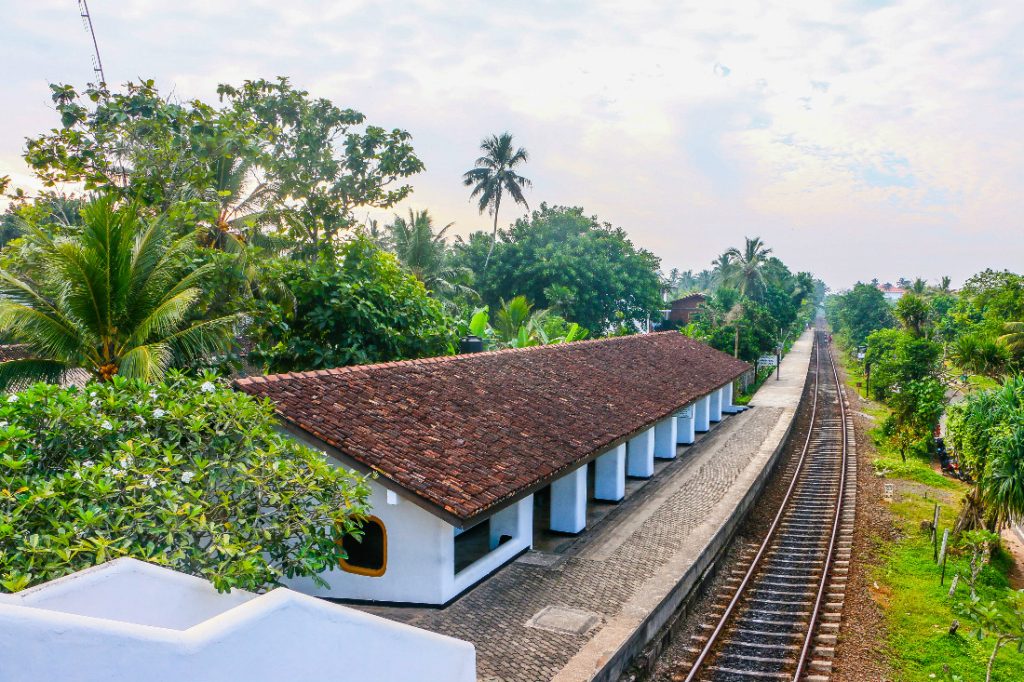
7. Jetwing Lighthouse in Galle is a luxury hotel that sits on seven acres of land overlooking the Indian Ocean. The old wing of the hotel features Bawa’s extraordinary design. As you climb the main staircase, you can’t miss the bronze-and-brass masterpiece crafted by artist Laki Senanayake, which portrays the first Portuguese arrival to the island in 1505. In the main bar, ceilings are decorated with the batik coats of arms of ancient Sri Lanka.
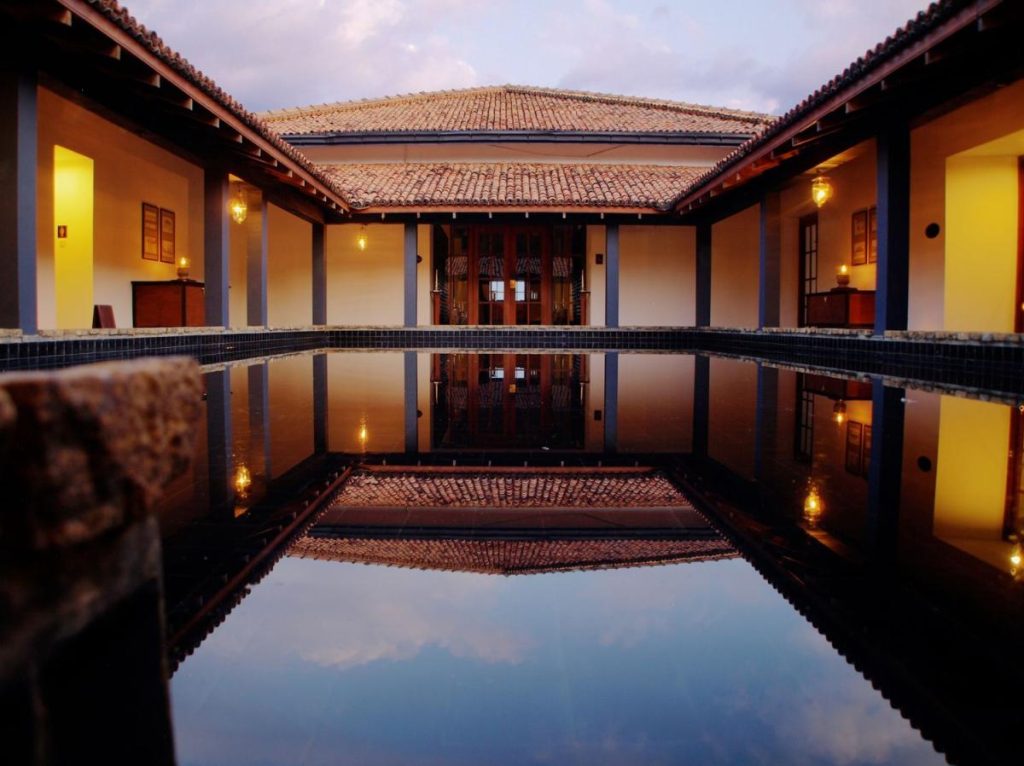
8. Seema Malaka was redesigned by Geoffrey Bawa in 1976 after the original structure slowly sank, the temple is in the middle of the Beira Lake and the design was inspired by the ancient monasteries in the forests of Anuradhapura and Ritigala. The temple is constructed on three platforms over water, which are connected to the mainland and with each other by pontoon bridges. The temple’s main roof is covered with blue colour tiles and the temple is made from collected spindles and handrails in wooden finishes. The architecture of the edifice resembles the Kandyan era.
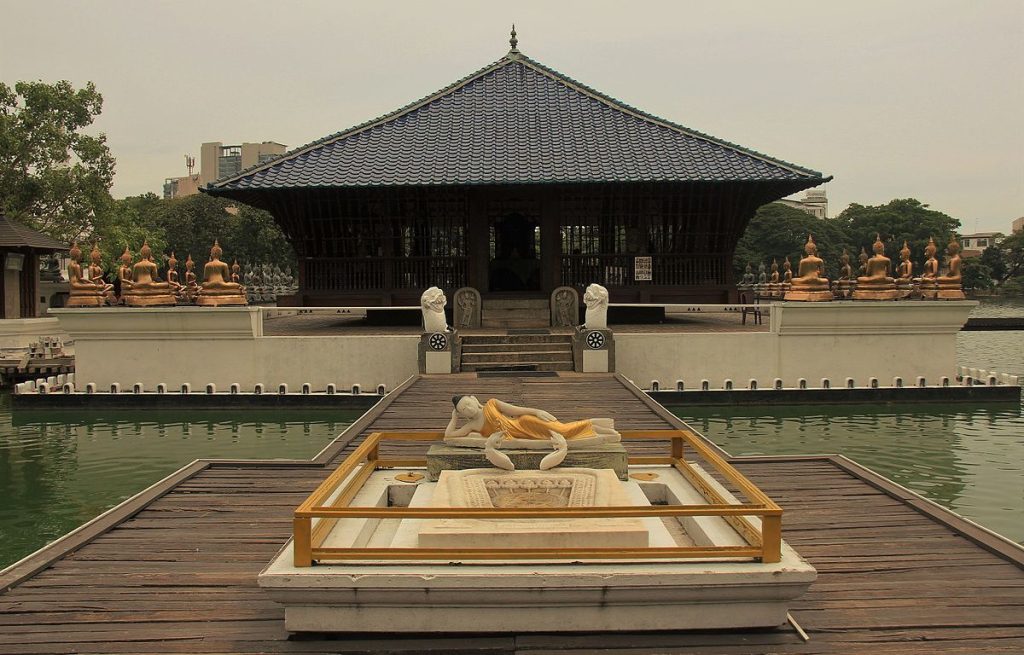




GIPHY App Key not set. Please check settings